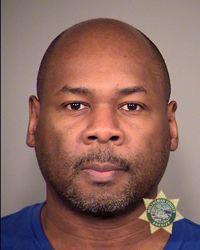|
A Weapon of Mass Destruction: Catholic Priests Falsely Accused
By Gordon J. Macrae
A year before the 2002 wave of clergy sex abuse claims rippled out of Boston across the country, Sean Murphy, age 37, and his mother, Sylvia, demanded $850,000 from the Archdiocese of Boston. Sean claimed that three decades earlier, he and his brother were repeatedly molested by their parish priest. In support of the claim, Mrs. Murphy produced old school records placing her sons in a community where the priest was once assigned. No other corroboration was needed. Shortly thereafter, Byron Worth, age 41, recounted molestation by the same priest and demanded his own six-figure settlement. The men were following an established practice of “mediated settlements,” a precedent set in the early 1990s when a multitude of molestation claims from the 1960s and 1970s emerged against Father James Porter and a few other priests. In 1993, the Diocese of Fall River settled some 80 such claims in a single negotiated deal. Other Church institutions followed that lead on the advice of insurers and attorneys. Before the Murphys’ $850,000 demand was paid, however, Sean, his mother, and Byron Worth were indicted by a Massachusetts grand jury for conspiracy, attempted larceny, and soliciting others to commit larceny. It turned out that Sean and Byron were once inmates together at the Massachusetts Correctional Institute at Shirley where they concocted their fraudulent plan to score a windfall from their beleaguered Church. On November 16, 2001, Sean Murphy and Byron Worth pleaded guilty to fraud charges and were sentenced to less than two years in prison for the scam. The younger Murphy brother was never charged, and Mrs. Murphy died before facing court proceedings. Local newspapers relegated the Murphy scam to the far back pages while headlines screamed about the emerging multitude of decades-old claims of abuse by priests. When two other inmates at MCI-Shirley accused another priest in 2001, a Boston lawyer wrote that it is no coincidence these men shared the same prison. “They also shared the same contingency lawyer,” he wrote. “I have some contacts in the prison system, having been an attorney for some time, and it has been made known to me that this is a current and popular scam.” It is not difficult to understand the roots of such fraud. Prison inmates, like others, read newspapers. Just months before the onslaught of claims against priests, the Archdiocese of Boston landed on the litigation radar screen with the notorious arrest of Mr. Christopher Reardon, a young, married, Catholic layman, model citizen, and youth counselor at a local YMCA who was also employed part-time at a small, remote parish outpost north of Boston. As Mr. Reardon’s extensive serial child molestation case came to light—with substantial and graphic DNA, videotape, and photographic evidence of assaults that occurred over previous months—the YMCA quickly entered into settlements consistent with the State’s charitable immunity laws. In a search for deeper pockets, however, a local contingency lawyer pondered for the news media about whether the rural part-time parish worker’s activities were personally known—and covered up—by the Cardinal Archbishop of Boston. It was a ludicrous suggestion, but it was a springboard to announce in the Boston Globe (July 14, 2001) that “the hearsay and speculation” among lawyers and clients, is that “the Catholic Church settled their cases [of suspected abuse by priests] for an average of $500,000 each since the 1990s.” It was a dangled lure that would soon have many takers, some of whom have been to the Church’s ATM more than once. In January of 2003, at the height of the clergy scandal, a 68-year-old Massachusetts priest had the poor judgment to be drawn into a series of suggestive Internet exchanges with a total stranger, a 32-year-old man named Dominic Martin. Using a threat of media exposure of the printed exchanges, Mr. Martin demanded that the priest leave an envelope containing $3,000 in a local restaurant lobby. The frightened priest, who never had a prior accusation, compounded his poor judgment by paying the demand. Soon after, another cash demand was made, but the priest finally called the police who set up a sting of their own. On January 24, 2003, Dominic Martin and his wife, Brianna, were arrested at the drop point, and charged with extortion. The police report revealed that Mr. Martin had changed his name. His birth name was identified as Tod Biltcliffe, a man who, a decade earlier, obtained a settlement when he accused a New Hampshire priest of molesting him in the 1980s. At the time the priest protested that Mr. Biltcliffe was committing fraud and larceny. The Church settled anyway. Biltcliffe’s claim was that when he was 15 years old, the priest fondled his genitals while the two were in a hot tub at a local YMCA. Curiously, the investigation file contained a transcript of a 1988 “Geraldo Rivera” show entitled “The Church’s Sexual Watergate.” One of the cases profiled was that of a young man who claimed that a priest fondled his genitals while the two were in a hot tub at a local YMCA. The 1988 “Geraldo” transcript was a sensationalized account of clergy sex abuse cases from the 1970s and 1980s. The transcript is notable because it contains many of the same claims of exposing secret Church documents, archives, and episcopal cover-ups in 1988 that lawyers and reporters claim to have exposed for the first time in 2003. Writer Jason Berry, and contingency lawyers Jeffrey Anderson and Roland Lewis all appeared live on “Geraldo” on November 14, 1988 to announce the existence of secret Church archives, cover-ups by bishops, and out-of-court settlements of Catholic clergy sex abuse claims across the country. Jason Berry, who excoriates the Church and priesthood at every turn, actually defended, in 1988, the existence of so-called “secret” Church archives: “Canon law says that you have to have a secret archive in every diocese….That’s funny because I’ve been attacking the Church for three years on this…I want to express my own irony of [now] being in a position of defending the Church.” When Shamont Lyle Sapp first detected the smell of money, he found it too enticing to pass up. Convicted for a series of bank robberies, Mr. Sapp, then age 51, was serving a lengthy sentence in the dark peripheries of the U.S. Penitentiary in Allenwood, Pennsylvania when the scent first drifted by his cell in 2008.That was when Sapp filed a lawsuit against the Archdiocese of Portland, Oregon. Detailing his tragic past, Sapp’s lawsuit claimed that he was a stranded teenage runaway from his Pennsylvania home en route to stay with relatives in Oregon. Then Archdiocese of Portland priest, Father Thomas Laughlin took advantage of his plight to repeatedly sexually abuse him. Sapp claimed in his highly detailed lawsuit that the priest offered the young runaway a job cutting grass, then sexually abused him at a Portland Catholic church. Then Father Laughlin sodomized him during a five-day motel stay paid for by the priest who then funded the youth’s return trip to Pennsylvania. It was the latest horror story in the Catholic abuse narrative, and one that dismayed Catholics coast to coast. Mr. Sapp’s story rang true, so it flew. Further inquiry was deemed unnecessary. The detailed claims were reported to civil legal authorities for whom the story also rang true, but Father Tom Laughlin had already been accused and convicted by others with similar tales. Mr. Sapp’s disturbing story added to the weight of a growing millstone around the priest’s neck. In all public documents in the case, Mr. Sapp found refuge among an ever-expanding list of “John Does” accusing priests from the Archdiocese of Portland to cash in on its bankruptcy proceedings. Sapp’s story was accepted at face value resulting in a cash settlement of $70,000. Inmate Sapp accepted the offer while lawyers, the Archdiocese, and victim advocates all pontificated about how no amount of money could compensate him for the trauma he endured. As for Father Laughlin, the “credible” (aka “settled”) accusations drove another nail into the coffin containing the remains of his priesthood as the Archdiocese sought his dismissal. There was only one problem with Shamont Lyle Sapp’s story: “It was entirely fabricated,” said Assistant U.S. Attorney Stephen Peifer who in 2014 prosecuted Sapp for mail fraud and other federal charges for this and three similar frauds carried out against Catholic priests and dioceses in four jurisdictions. While serving another sentence in a medium security state prison in Minersville, PA, Mr. Sapp filed a second lawsuit claiming that a priest of the Diocese of Tucson, Arizona sexually abused him. Later still, Sapp was serving a sentence in a South Carolina prison from where he sought compensation for claimed sexual abuse by another priest. And before all the above, Sapp filed a 2006 lawsuit claiming that a Spokane, Washington priest had sexually abused him in a similar account. In all these other claims, Sapp picked from diocesan records the names of senior priests who had never before been accused, destroying not only their good names, but their vocations. Each was removed from ministry under the terms of the U.S. Bishops’ Dallas Charter. They became “Priests in Limbo,” as the National Catholic Register’s Joan Frawley Desmond described priests living, sometimes for years, under a cloud of shame and suspicion for events that could not be disproven after the passage of time. In each of his claims, Shamont Lyle Sapp simply did a little research on publicly available bankruptcy proceedings entered into by each of the four beleaguered dioceses he sued. He then attached his name and claims to each case – one by one over several years – aided and abetted by an assurance of anonymity as “John Doe” at every level in the settlement process. He was also “John Doe” in the news media, and in the fired-up rhetoric of the activists of S.N.A.P., the Survivors Network of those Abused by Priests who are ready to dismiss any hard questions as “revictimizing the victims.” It was ultimately his own greed that unfolded Mr. Sapp’s hand. In 2011, Sapp gained some notoriety when he filed a lawsuit seeking $1 million in damages against comedians Jamie Fox and Tyler Perry, falsely claiming that they stole from him an idea for a film project called “Skank Robbers.” Finally, someone took a hard look at Shamont Lyle Sapp, and it was his undoing. In a 2004 article in the Boston Phoenix, “Fleecing the Shepherds,” legal expert and author Harvey Silverglate cautioned against capitulating to significant numbers of questionable claims brought after the Church entered into huge blanket settlements. In some cases, such claims were deemed “credible”—the standard established for permanent removal of accused priests—with no other basis than their having been settled. As accusations swept over the U.S. Church, few in the media dared write anything contrary to the tidal wave gaining indiscriminate momentum against the Church. A notable exception was the left-leaning Catholic magazine Commonweal, which editorialized: “Admittedly, perspective is hard to come by in the midst of a media barrage that is reminiscent of the day care sex abuse stories, now largely disproved, of the early nineties…All analogies limp, but it is hard not to be reminded of the din of accusation and conspiracy-mongering that characterized the anti-Communist witch hunts of the early 1950s.” With media coverage of the unprecedented $3 billion invested in mediated settlements, the trolling for claims and litigation continues unabated. In 2007, a Boston area high school history teacher and coach of twenty years, a husband and father with no prior record or accusation, was caught up in an Internet sting by a detective posing on-line as a teenage boy cruising Internet chat rooms for sexual encounters. The practice has netted the detective some 600 arrests, including—by his own estimation—1 Catholic priest, 6 police officers, and 18 public school teachers. The Keene, New Hampshire police detective was also known to have fielded cases for local contingency lawyers. The ex-teacher, now prison inmate, related that as the handcuffs were set upon him, before he was even led out of the YMCA to which he had been lured and arrested, the detective reportedly asked some enticing questions: “Are you a Catholic?” “Yes,” said the suspect. "Were you ever an altar boy?” Another “Yes.” “Were you ever molested by a priest?”
|
.
Any original material on these pages is copyright © BishopAccountability.org 2004. Reproduce freely with attribution.



